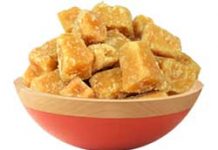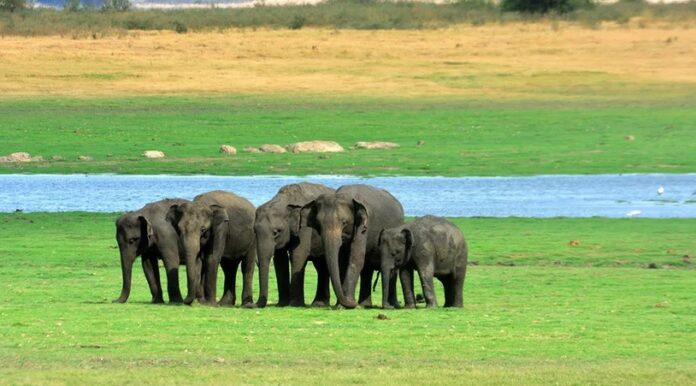Confronting the baseless superstitions endangering elephants
Over the past decade, the Sri Lankan elephant (Elephas maximus maximus), – native to Sri Lanka and one of three recognised subspecies of the Asian elephant – has witnessed a disturbing rise in the poaching of its majestic population. This trend reflects a broader crisis facing these gentle giants across their ranges. While official data from the Department of Wildlife Conservation (DWC) paints a grim picture – with over 1,000 elephants killed in the last decade due to the human-elephant conflict – experts believe that the actual number could be much higher. Wild elephant deaths have been increasing alarmingly over the past few years, namely 433 in 2022 and reaching an all-time peak of 473 last year (in 2023), which is more than one elephant killed per day.
While precise numbers can fluctuate due to the clandestine nature of the poaching activities, our majestic elephants, a national treasure and symbol of strength in Sri Lanka, face a grave threat. These revered animals, integral to the country’s ecological and cultural heritage, are not just threatened by habitat loss or the human-animal conflict. Studies claim that most elephants and tuskers are poached for their tusks, which are believed to possess ‘gajamuthu’ (elephant pearls) and symbolise power and prosperity. But, there is a worrying belief and a much more insidious foe fuelling these brutal killings – superstition, specifically superstitious beliefs that some parts of an elephant’s body have magical healing properties. This misinformation is not limited to just one region. It highlights the global challenge that we face in conserving these magnificent creatures.
While the reverence for elephants is widespread in Sri Lanka, mainly because of their association with religious processions and the cultural heritage, using their body parts for purported healing or magical properties is not a common practice among most Sri Lankans.
However, it is important to note that there are many instances where local poachers kill elephants to sell their body parts to overseas clients, specifically for these medicinal and magical values. This illegal trade is driven by the demand in other countries rather than domestic beliefs or practices.
Due to this niche yet in demand market, a global black market thrives, fueled by a demand for ivory and other elephant parts in traditional medicine practices.
Ivory (tusks)
Traditionally, ivory has been ground into a fine powder and mixed into potions or ointments, believed to help with ailments like arthritis or to serve as an aphrodisiac. Its more dominant use however has been in creating artefacts, jewellery, and piano keys, symbolising wealth and status.
Skin
In Myanmar, the dried and powdered elephant skin is mixed into ointments or pastes and applied to the skin to cure eczema, acne, or other dermatological conditions.
Hair
Believed to bring luck, health, and prosperity, bracelets are made from the hair of an elephant’s tail. This belief is widespread in various African cultures and some Asian traditions, including Sri Lanka.
Dung
In some communities, elephant dung is brewed into a tea or used in a paste form, believed to cure stomach ailments or detoxify the body. The practice stems from the belief that since elephants consume a wide variety of plants, their dung has accumulated medicinal properties.
Bones and teeth (other than tusks)
Similar to ivory, the bones and teeth are ground into a powder and used in traditional medicine practices. This powder is sometimes consumed directly or mixed into drinks, with the belief that it can treat pain and inflammation or even act as a calcium supplement.
Fat
Used topically, this balm is made from rendered elephant fat and is believed to relieve muscle aches, joint pain, and rheumatism. Some communities believe that it can heal wounds and burns more effectively than conventional medicines.
We live in an age of science that aims to uncover the mysteries of human understanding. However, it is unfortunate to see people believing in unfounded claims. It is crucial to subject these claims to thorough scientific investigations. The findings of such investigations should be known to the world so that people can make informed choices based on facts and evidence-based science.
Ivory and its claims
Ivory, primarily composed of dentin, a material found in the teeth and tusks of animals, has been claimed to possess various healing properties in traditional medicine systems. However, scientific analysis reveals that dentin is similar to bone and contains no unique compounds known to offer medicinal benefits. Studies have systematically debunked that ingesting or possessing ivory can cure diseases or improve health.
Elephant skin and traditional remedies
Some cultures use elephant skin in powdered form, believing that it can cure skin diseases or ailments. Scientifically, there is no evidence to support these claims. Like any other animal’s skin, an elephant’s skin lacks specific properties that would provide the alleged benefits. Instead, dermatological research emphasises the importance of proven treatments and cautions against unverified traditional remedies, which can sometimes do more harm than good.
Hair, bones, and other parts
Similarly, other elephant parts like hair and bones have been ascribed various powers, from bringing luck, to offering protection against harm. These beliefs are deeply rooted in tradition and superstition rather than empirical evidence. The scientific inquiry into these claims has found no basis in reality. The properties attributed to elephant hair or bones are without scientific merit, serving instead to perpetuate poaching and the illegal trade.
The placebo effect and confirmation bias
Some perceived benefits of using elephant parts in traditional medicine may be explained by psychological phenomena such as the placebo effect and the confirmation bias. The belief in the efficacy of a remedy can sometimes trigger a psychological response in an individual, leading them to perceive an improvement in their condition regardless of the treatment’s effectiveness. This psychological aspect underscores the complex interplay between belief, culture, and medicine.
The scientific consensus is clear. No evidence supports the medicinal or magical properties attributed to elephant body parts. While culturally significant, these beliefs have no foundation in scientific reality and contribute to the endangerment of elephant populations worldwide.
Humans have a deep sense of empathy and connection to the world. Our choices and actions hold great power. We must use them wisely to protect the most vulnerable. We must act as responsible stewards of this planet and ensure that our majestic elephants continue to roam free in the forests of Sri Lanka. We must reject superstition and embrace conservation so that these magnificent creatures can continue to thrive and inspire us with their beauty and resilience. Let us not allow them to become ghosts of the past or add to the list of extinct species like the swamp elephant of Sri Lanka.
(The writer is an electronics engineer with a background in information technology and sustainability)
– by courtesy of themorning.lk




















